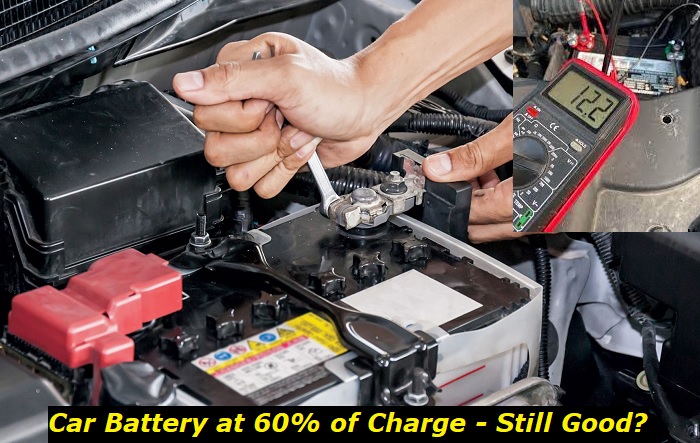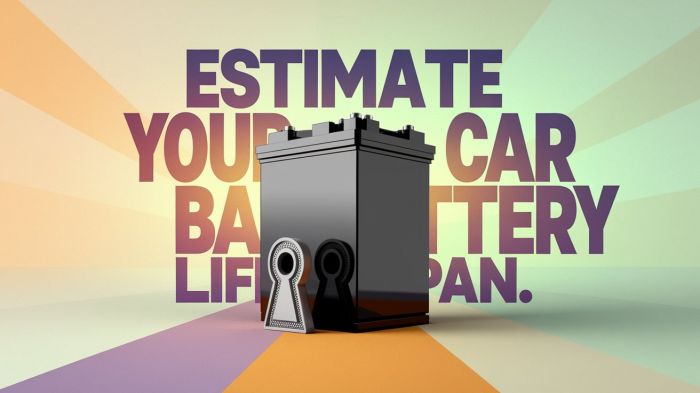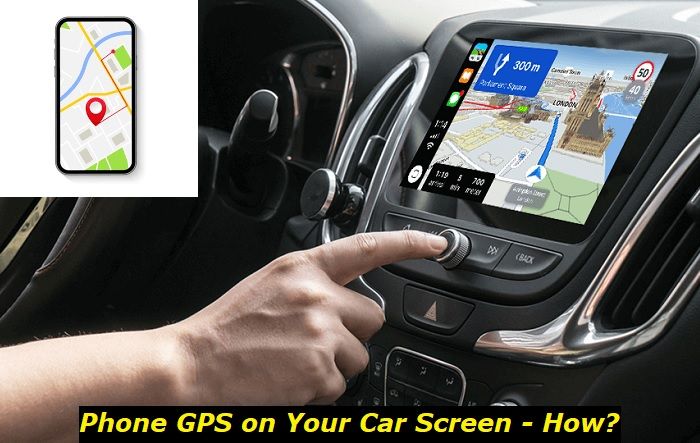A car battery is a vital component in your car. Without a battery, the central locking won't work, and the dashboard lights won't light up. Worse still, the engine won't start when your car has no battery. A car battery with a low percentage of voltage can also be as good as a dead one. The battery needs to have the right percentage of voltage for it to power the car engine and instruments.
Car battery voltage highlights
- Optimal conditions:12.4 - 12.5 volts
- When charging:14.3 - 14.7 volts
- Alarming voltage:less than 12 volts
- Acceptable drop when loaded:up to 10.5 volts
- Fix for low voltage:charging or replacement
- DIY fix:possible
- How much to fix? $0 - $250

Understanding the car battery
The car battery is typically the powerhouse of the car. It should therefore have enough charge to power all the components and systems in the car. Your car uses a lead-based, which can either be dry or flooded. They contain lead plates and lead dioxide with some electrolytes and are housed in a polypropylene container.
A fully charged car battery should have 12.5 V, while a dead or fully discharged battery should give a 10.50 V or less than that. The figures will vary from one battery to the next. When it comes to powering your car, what matters is not the number of volts in the battery but the percentage of volts it can discharge.
At 60%, a car battery contains 12.2 volts. While this might seem like enough charge to power your car, it is not safe to maintain the battery at this volt percentage. Normally, when a lead-cell battery discharges below 50%, damage starts happening. Maintaining the battery at this capacity will lead to irreversible damage in most cases.
A car battery will serve you anything between 3 and 7 years. For many drivers whose daily driving is short distances and in the city, the batteries never see the 5th anniversary under the hood. A battery needs to be maintained at a higher voltage or percentage of volts to serve you for a long time. The battery wear and tear is not constant. It can be 95% one day; a few months later, it drops to 20% or less. This mainly depends on the weather and the condition it's kept.
Is 60 percent of charge sufficient?
When you attach a voltmeter to your car battery and get a reading of 60%, you should be concerned. This is especially if you regularly drive for at least two hours on a highway where the 50mph speed is reached. The battery is charged when the engine is running. Idling is not sufficient to fully charge your car, especially if the reading is 11.6V, which in most cases is considered dead.
Let us assume you crank the engine one morning and realize the battery is dead. You call your friend over to help you jumpstart the car. The car is jump-started, and your friend leaves. But since you were not ready to leave for work immediately, you left the engine running to charge the battery. After twenty minutes, you are ready for work, and you are settled in the driver's seat, ready to take off. Out of curiosity, you decide to switch off the engine to see if the battery has gained enough charge. This is a bad idea, even if the battery reads 60%.
As highlighted earlier, a car battery at 60% is sufficient charge, but it is at risk of failing. The engine requires a high current to get started. At 60%, some batteries will be unable to crank the engine. Even though the car lights may be working and all the other systems work okay, the engine demand on the battery is quite intense, and voltage below 12.00V might be insufficient on some cars. For some cars, however, 60% is enough to start the engine, and it could even go as low as 50%. In most cars, 75% and above is the ideal charge to have in the battery if it is to provide power without fail.
How to charge the car battery?
A car battery is considered healthy when the voltage is above 12.65. when the charge goes below 12.5V (90%), it is advisable to consider charging the battery. Essentially, the battery should be maintained at 90% if you are to enjoy using the battery for many years.
When the battery has charged, the ignition system and the engine is running. The work of the battery is done. The alternator takes over the powering role of most of the electronic functions. The charge drawn from the battery is replaced when the engine starts running. The engine has to maintain a minimum of 1,000 RPMs for it to generate enough power to charge the battery.
When the engine is idling, the RPMs are below 1,000, which means the battery is not charging. Even if the battery is charging somehow when the car is in parking mode, moving the battery percentage from 50% to 90% will take hours.
The easiest and best way to charge the car battery is to take the car for a spin. It should take about half an hour to maintain a speed of 55MPH. The higher the speed, the faster the battery will charge. Driving the car at highway speed every day will help maintain the battery charge above 80%. If, on the other hand, you drive for ten minutes or less to work and do the same in the evening, the battery will likely never be fully charged.
What makes the car battery charge drop to 60%?
We have seen that while a 60% charge is not really a disaster, it is not the ideal charge to maintain your car battery at. Several factors will lead the car battery to drop to 60% charge. Some factors are natural and unpreventable, while others can be controlled and avoided. Here are the reasons;
1) The weather
Statistics show car battery sales double twice every year. This happens in the coldest weeks of winter and the hottest weeks in summer. During the cold season, the engine is cold, the engine oil is quite thick, and starting the engine becomes harder. During the cold season, the solution in the battery ability reduces, making the battery less effective. During winter, it is advisable to be parking your car in the garage and not outside.
In summer, the heat causes evaporation in the battery cells. The reduced battery solution makes the battery's capacity and ability reduce. If the battery goes unchecked throughout the year, its ability deteriorates, which can easily lead to a drastically reduced lifespan.
2) Lifestyle
By lifestyle, we don't mean what you eat or where you go for a drink. We are talking about your style of driving and the distance you go. A car driven for 30 minutes daily and through heavy city traffic will likely demand a battery replacement within two years. This is as compared to one driven 3 hours daily on the country roads at speeds of over 50MPH. Always driving at very low speeds does not help either, as the minimum RPM of the engine required to charge the battery is 1,000.
3) Poor maintenance
If you buy a standard car battery, you should enjoy using it for at least 5 years. Some batteries carry 5-year warranties, while most carry a 2-year warranty. The lifespan of a battery mainly depends on the condition it's maintained in.
Have the battery checked every time you are doing an engine service. Check the voltage every time to avoid an embarrassing moment when the car fails to start. Clean the terminals when powdery grunge forms. Add acid and distilled water whenever the level in the cells drops below the recommended point. Another thing you might benefit from is avoiding idling the car for long or not starting the engine for more than a week. Avoid using overusing AC and other electronics when the ignition is at the ON position.
Should you replace the car battery at 60% charge?
A battery giving a 60% reading should work just fine. However, it is at this percentage that the battery starts acting up. When you rev the engine, the headlights will become brighter, and the instrument cluster becomes dimmer when starting the engine when the battery is low. At this percentage, the battery is holding around 12.2 V.
A battery reading 60% of the total does not necessarily mean it's bad. It might have drained, either because of bad weather, the AC was ON when the engine was not running, or you have been driving very short distances of late. If, after cranking the engine and driving for several hours and at highway speeds, the battery still gives a 60%, then it's time to consider replacing it. If all the charging components, such as the alternator, are sound, then replacing the battery is prudent before it fails on you.
Conclusion
The battery giving a 60% voltage reading does not mean the battery is bad. However, after reading the article, it should now be clear that you should take some action. If a battery fault causes the voltage drop, then you have ample warning to replace it. On the other hand, if the drop was caused by a fault you can control, then you have learned ways to ensure this doesn't happen again.
About the authors
The CarAraC research team is composed of seasoned auto mechanics and automotive industry professionals, including individuals with advanced degrees and certifications in their field. Our team members boast prestigious credentials, reflecting their extensive knowledge and skills. These qualifications include: IMI: Institute of the Motor Industry, ASE-Certified Master Automobile Technicians; Coventry University, Graduate of MA in Automotive Journalism; Politecnico di Torino, Italy, MS Automotive Engineering; Ss. Cyril and Methodius University in Skopje, Mechanical University in Skopje; TOC Automotive College; DHA Suffa University, Department of Mechanical Engineering






Add comment